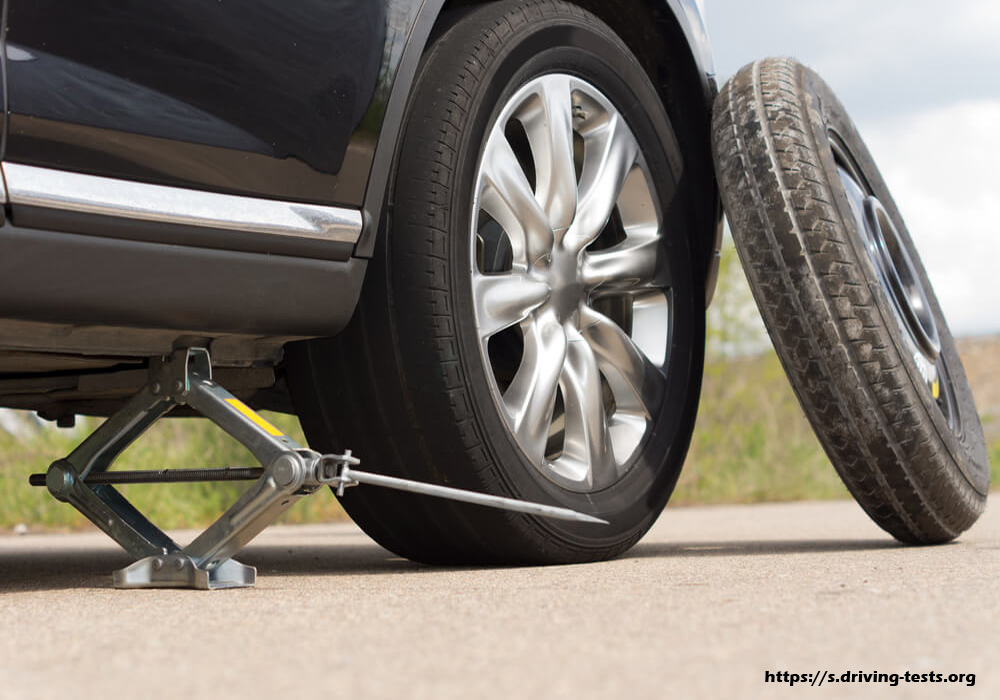It’s a fact of life and bound to happen if you drive enough miles or km – flat tires. They should not happen yet they do even to the best of well maintained cars, SUVs and trucks. Whether it is glass shards, roofer nails in the drive way or January February cold winter temperatures leading to leaks from frigid aluminum rims you can bet its not a question of if you ever have a flat or low tire but only “when”. Still what do you do in these situations to correct and solve your problem which if preventing you from traveling down the road to your destination or destinations?
First of all the easiest solution is to call roadside assistance or the motor league for a “rescue vehicle” to change your flat. Sure in 2011 most of us have cell phones yet this is not always an option since you may in an isolated locale or more likely at peak times the wait time may be longer than its worth. Better to do it yourself – or even better have a kind Samaritan asking to provide assistance on the spot, on the fly.
What to do if none of the above avails to you at the moment.
1) Try to park the car on level ground, a safe distance from speeding traffic. If you are on a hill, coast to the bottom before attempting to change the tire. If you are on a city street, turn the wheels away from the curb to prevent it from rolling away. At the very least make sure that there are no innocent passengers, bystanders or animals near the car
2) Block the wheels. Even if you are on level ground grab a few rocks or other handy objects that you can find to wedge against the wheels at the opposite end of the vehicle
3) Ensure that your auto is in park or neutral and that the emergency brake is on before you jack it up
4) Place the jack under the car or truck near the flat tire so it will touch either the automobile frame or rear-wheel suspension
5) Remove the hubcap by prying it off with the flat end of the lug wrench or other flat instrument.
6) Loosen the lug nuts. However do not remove them until you have finished jacking up the car. This can take a little muscle, especially if they have been tightened with a power tool. If you are on the right side of the car, turn the nuts counterclockwise to loosen them. If you are on the left side of the car, look at the center of the center to see if it has an “R” (turn clockwise) or alternatively an “:” (then turn counterclockwise). If it has not lettered what so ever, turn it counterclockwise. If the lugs are on so tight that they will not budge what so ever don’t even be afraid to give the wrench a solid good tug or in some cases even kicking or standing on wrench it to give enough leverage and torque to better loosen those bolts.
7) Jack it up. Relax, breathe deeply and apply nice clean strokes.
8) Now remove the lug nuts. Put them in a hubcap or a pocket so that you do not accidentally misplace them or worse they fall into a sewer or into a grate. Grab the flat tire and pull it towards you until it slides of the bolts. (Employ caution as it’s heavier than it looks). Then, replace the flat tire with the spare tire. If you cannot seem to locate the spare check the trunk, under the floor mat in the trunk as well. Some of the time the spare tire is underneath the car itself or in the case of trucks in the truck bed area. If you really cannot locate the spare tire take time to read the owner’s manual which should be in the glove box
9) Tighten the lugs; put the hubcap back on with a good whack. You are now ready to “rock and roll”. Or at least roll down the road to your original destination or errands.
Lastly remember that the spare in most cars currently are only temporary spares referred to as “donuts”. They are made for space savings, not to run fast, far or stop on a dime. Your first stop should be to get the spare tire repaired or replaced. If you are driving on the temporary spare you have no other spare tire available should you have another flat or a tire low on air. Get the deflated tire either repaired or replaced promptly.




